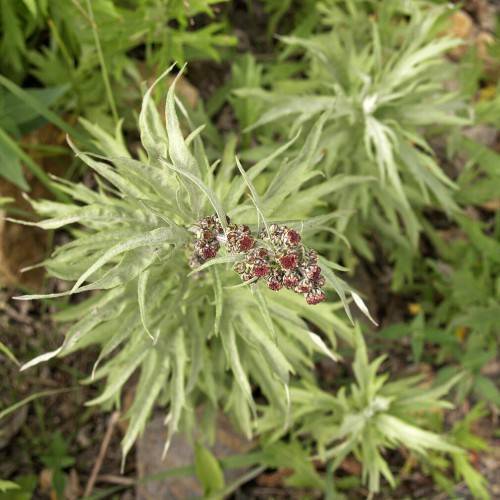
Tilesius Wormwood
Artemisia tilesii
Also Known As - Aluetian Mugwort,Mountain Sagewort,Mountain Sagewort,Mountain Sagewort,Aluetian Muwort,Mountain SagewortWatering:
Frequent
Hardiness Zone:
Sun:
full sun,part shade
Leaf:
Yes
Growth Rate:
Low
Poisonous To Humans:
Yes
Poisonous To Pets:
Yes
Drought Tolerant:
Yes
Salt Tolerant:
Yes
Thorny:
Yes
Care Level:
Medium
watering
Mountain Sagewort should be watered regularly as it is a perennial plant. Water deeply and thoroughly to encourage a deep root system. Water every 7-10 days, making sure the plant is thoroughly saturated with water. Increase the frequency of watering during hot or dry weather to keep the root system cool and moist. It is best to water in the morning, including during the summer months, as the leaves may become scorched in the afternoon sun after a late-afternoon watering. Avoid over-watering, as this can cause root rot.
sunlight
Mountain Sagewort is best grown in full sun for optimal growth and flowering. It requires around 6 to 8 hours of direct sunlight each day, ideally between mid-morning and early afternoon. For northern latitudes, the plant should be placed in a south-facing window or in an area with bright sunlight. During the summer, when the hours of sunlight are longer, the plant may tolerate less direct sun in the late afternoon. For very hot, dry areas, however, it may require even more shade.
pruning
Mountain Sagewort should be pruned in late summer or early fall. Pruning should be done to remove any dead Wood, encourage the growth of new branches, and thin out any overly dense areas. Pruning should be done so that only 1-third to 1-half of the plant is removed overall. Any pruning should be done carefully to minimize the damage to surrounding areas. When pruning, it is important to use sharp tools and to make the cuts as far from the stem or branch as possible so as to avoid cutting off the plant's growth point.
